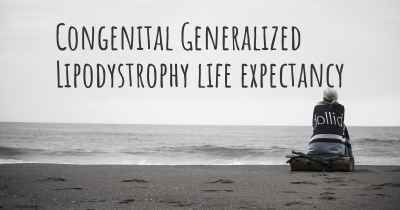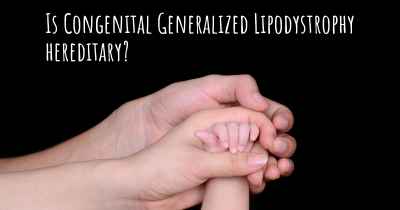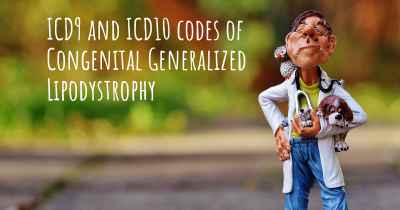What is the history of Congenital Generalized Lipodystrophy?
When was Congenital Generalized Lipodystrophy discovered? What is the story of this discovery? Was it coincidence or not?

Congenital Generalized Lipodystrophy (CGL) is a rare genetic disorder characterized by the near-complete absence of adipose tissue throughout the body. This condition was first described in medical literature in the early 20th century, and since then, significant progress has been made in understanding its causes, symptoms, and management.
Discovery and Early Research
The history of Congenital Generalized Lipodystrophy dates back to the 1920s when French physician Dr. Maurice Laronde first reported a case of a young girl with a complete lack of body fat. He named the condition "lipodystrophie congénitale généralisée" or Congenital Generalized Lipodystrophy. Dr. Laronde's observations laid the foundation for further research into this rare disorder.
Genetic Discoveries
It wasn't until the late 1990s that significant breakthroughs were made in understanding the genetic basis of Congenital Generalized Lipodystrophy. Researchers identified mutations in several genes that play a crucial role in fat metabolism, including AGPAT2, BSCL2, CAV1, and PTRF. These genes are involved in the production, storage, and distribution of fat cells in the body.
AGPAT2: Mutations in the AGPAT2 gene were found to be responsible for the most common form of Congenital Generalized Lipodystrophy, known as Berardinelli-Seip Congenital Lipodystrophy type 1 (BSCL1). This discovery provided valuable insights into the molecular mechanisms underlying the disorder.
BSCL2: Mutations in the BSCL2 gene were later identified as the cause of another form of Congenital Generalized Lipodystrophy, known as Berardinelli-Seip Congenital Lipodystrophy type 2 (BSCL2). This gene is involved in the production of seipin, a protein essential for the normal development and function of adipose tissue.
CAV1 and PTRF: Mutations in the CAV1 and PTRF genes were found to cause another subtype of Congenital Generalized Lipodystrophy, known as Dunnigan-type Familial Partial Lipodystrophy (FPLD). These genes are involved in the formation of caveolae, small invaginations in the cell membrane that play a role in lipid metabolism.
Clinical Presentation and Symptoms
Congenital Generalized Lipodystrophy is typically evident at birth or during early childhood. Infants with this condition often have an extremely lean appearance due to the lack of subcutaneous fat. As they grow older, they may develop certain characteristic features, including:
- Hypertriglyceridemia: Elevated levels of triglycerides in the blood, which can lead to pancreatitis and other complications.
- Hepatomegaly: Enlargement of the liver due to the abnormal accumulation of fat.
- Insulin Resistance: The body's reduced ability to respond to insulin, leading to diabetes and metabolic abnormalities.
- Muscular Hypertrophy: Overdevelopment of muscles, particularly in the extremities, as a compensatory mechanism for the lack of fat tissue.
- Acromegaloid Features: Facial and skeletal abnormalities, such as a prominent jaw, enlarged hands and feet, and thickened skin.
Management and Treatment
Currently, there is no cure for Congenital Generalized Lipodystrophy, and treatment primarily focuses on managing the associated complications and improving quality of life. A multidisciplinary approach involving endocrinologists, dieticians, and other specialists is often necessary.
Diet and Nutrition: A carefully planned diet low in fat and carbohydrates is typically recommended to help manage hypertriglyceridemia and maintain stable blood glucose levels. Nutritional supplements may also be prescribed to ensure adequate vitamin and mineral intake.
Insulin Sensitizers: Medications such as thiazolidinediones (TZDs) may be prescribed to improve insulin sensitivity and glycemic control in individuals with Congenital Generalized Lipodystrophy.
Lipid-Lowering Agents: Drugs like fibrates or omega-3 fatty acids may be used to reduce triglyceride levels and prevent complications associated with hypertriglyceridemia.
Plastic Surgery: In some cases, reconstructive surgery may be considered to address cosmetic concerns or correct certain physical abnormalities associated with Congenital Generalized Lipodystrophy.
Research and Future Perspectives
Ongoing research aims to further unravel the molecular mechanisms underlying Congenital Generalized Lipodystrophy and develop targeted therapies. Gene therapy and pharmacological interventions targeting specific metabolic pathways are being explored as potential treatment options. Additionally, advancements in understanding the role of adipose tissue in overall health and metabolism may contribute to improved management strategies for individuals with this rare disorder.
In conclusion, the history of Congenital Generalized Lipodystrophy spans several decades of scientific investigation and genetic discoveries. While significant progress has been made in understanding the causes and symptoms of this rare disorder, further research is needed to develop effective treatments and improve the quality of life for individuals living with Congenital Generalized Lipodystrophy.








